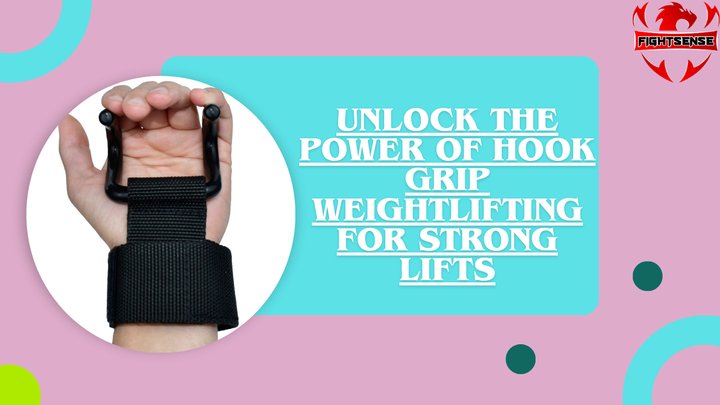Unlock the Power of Hook Grip Weightlifting for Strong Lifts
8th Apr 2025
Hook grip weightlifting could be the solution if you’ve struggled with grip failure during heavy lifts. This technique offers a secure hold that prevents the barbell from slipping. Especially valuable for Olympic lifts and powerlifting, it improves control and reduces the risk of injury.
In this blog, we’ll explore how effective hook grip weightlifting is and why it can be a game-changer for serious lifters.
Key Highlights:
- A Hook grip weightlifting is a must-try for those serious about their lifting performance.
- The hook grips provide a strong, consistent grip that keeps grip failure away.
- The approach lessens finger and wrist strain.
- It enables lifters to push their limits free from concern for grip tiredness.
- For those truly committed to their lifting performance, a must-try.
What is hook grip weightlifting?
In the hook grip weightlifting method, your thumb is locked in place with your fingers by wrapping under the bar. This offers a solid grip, therefore stopping the bar from sliding. For dedicated lifters, it's a game-changer even if it might first seem awkward. Olympic lifts like snatches and cleans heavily rely on it, but powerlifters also benefit from it.
The Lifting Hook Grip: A Secure Hold
Compared to a conventional grip, the lifting hook grips provide you a stronger and more sturdy one. Especially on big lifts, locking your thumb under your fingers helps the bar stay securely in place, therefore lessening the pressure on your fingers and giving more control.
Why Hook Grip Weightlifting is Essential
Better Grip Security: Particularly during big lifts, hook grip weightlifting offers primarily a stable hold as its main benefit. The hook grip stops sliding, thereby enabling a more controlled lift whether you are deadlifting or snatching.
Prevent Wrist Strain: The hook grip weightlifting helps to avoid wrist strain by more fairly spreading force. Reducing the pressure on your wrists and fingers by hook grip weightlifting makes lifts safer and more effective.
More Power for Heavy Lifts: It helps you to have better control by stabilizing the bar. This lets you create more power during lifts free from concern for your grasp failing.
Reduces Grip Fatigue: Although grip tiredness can slow you down, the hook grip assists by lessening finger strain. Your thumb does most of the work; so, you can lift more without getting tired.
How to Use the Hook Grip in Weightlifting
- Position Your Hands: Your fingers on top, grasp the bar with your thumb under.
- Secure Your Grip: Tightly round the bar with your fingers to make sure it doesn't slip.
- Maintain Firmness: For best control, keep the hold strong all during the lift.
Conclusion:
For lifters aiming to boost strength while reducing injury risks, lifting hook grip is a fundamental technique. Ideal for heavy lifts, it keeps your hands secure and your grip firm on the bar. While it may feel awkward at first, the long-term benefits make it worth mastering.
For more information and details, Visit Fightsense.com.
Disclaimer:
The material in this blog is meant for instructional use. Before attempting different lifting methods, always see a qualified trainer or doctor.
FAQs
Does the hook grip hurt my thumbs?
Though at first difficult, the discomfort will go with experience.
Can I use the hook grip for all lifts?
Though not required for every exercise, the hook grip is perfect for big and Olympic lifts.
How long does it take to get used to the hook grip?
Before it feels natural, several weeks of practice could be needed.
Is the hook grip better than a traditional grip?
Indeed, it offers better stability—particularly for large lifts.
Should I use the hook grip for every lift?
It's advised for heavy lifting but not required for less strenuous activities.

